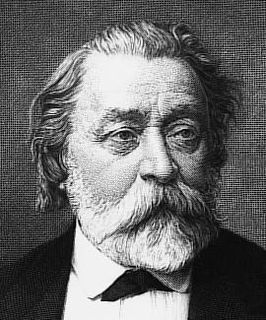
Sir John Fowler, 1st Baronet, KCMG, LLD, FRSE was an English civil engineer specialising in the construction of railways and railway infrastructure. In the 1850s and 1860s, he was engineer for the world's first underground railway, London's Metropolitan Railway, built by the "cut-and-cover" method under city streets. In the 1880s, he was chief engineer for the Forth Bridge, which opened in 1890. Fowler's was a long and eminent career, spanning most of the 19th century's railway expansion, and he was engineer, adviser or consultant to many British and foreign railway companies and governments. He was the youngest president of the Institution of Civil Engineers, between 1865 and 1867, and his major works represent a lasting legacy of Victorian engineering.

The Emperor Ferdinand Northern Railway was the name of a former railway company during the time of the Austrian Empire. Its main line was intended to connect Vienna with the salt mines in Bochnia near Kraków (Krakau). The term is still used today in referring to a number of railway lines formerly operated by that company.

Baron Theophil Edvard von Hansen was a Danish architect who later became an Austrian citizen. He became particularly well known for his buildings and structures in Athens and Vienna, and is considered an outstanding representative of Neoclassicism and Historicism.
William Stroudley was an English railway engineer, and was one of the most famous steam locomotive engineers of the nineteenth century, working principally for the London, Brighton and South Coast Railway (LB&SCR). He designed some of the most famous and longest-lived steam locomotives of his era, several of which have been preserved.

Swindon railway works was opened by the Great Western Railway in 1843 in Swindon, Wiltshire, England. It served as the principal west England maintenance centre until closed in 1986.
R and W Hawthorn Ltd was a locomotive manufacturer in Newcastle upon Tyne, England, from 1817 until 1885.

Neilson and Company was a locomotive manufacturer in Glasgow, Scotland.

The LNER W1 No. 10000 was an experimental steam locomotive fitted with a high pressure water-tube boiler. Nigel Gresley was impressed by the results of using high-pressure steam in marine applications and so in 1924 he approached Harold Yarrow of shipyard & boilermakers Yarrow & Company of Glasgow to design a suitable boiler for a railway locomotive, based on Yarrow's design.
Adolph Giesl-Gieslingen was an Austrian locomotive designer and engineer. Giesl-Gieslingen was born in 1903 in Trient, Tirol, and studied at the Technical College in Vienna. In 1924 he published a technical article on smokebox design and chimneys. In 1925 he received his diploma as an engineer, and began working as a design engineer at the Floridsdorf locomotive works, where he was involved in the construction of the Class 214 2-8-4s. While at Floridorf he continued his studies, being interested in developing the rectangular chimney design developed by Golsdorf in Austria, and finished his doctoral thesis on locomotive front-end design in 1929.

Lokomotivfabrik Floridsdorf was an Austrian locomotive works founded on 6 September 1869 that achieved a pre-eminent place amongst European locomotive builders thanks to the quality and diversity of its designs.

The steam locomotives of Südbahn Class 23 (old) were goods train engines worked by the Austrian Southern Railway.
In 1839 the Lokomotivfabrik der StEG became the first Austro-Hungarian locomotive works to be founded and it produced many influential locomotive designs.

Karl Gölsdorf was an Austrian engineer and locomotive designer.
Johann Brotan was an Austrian mechanical engineer, specialising in locomotive construction.

Louis Adolf Gölsdorf was an Austrian engineer and locomotive designer. He was the father of Karl Gölsdorf.
Johann Rihosek was an Austrian engineer and locomotive designer. Johann Rihosek was born in Maków Podhalański, in Austro-Hungarian Galicia on 5 June 1869. He attended the middle school at Olmütz and later studied mechanical engineering at the Vienna Technical University.

The Southern Railway is a railway in Austria that runs from Vienna to Graz and the border with Slovenia at Spielfeld via Semmering and Bruck an der Mur. It is a part of the Austrian Southern Railway that connected Vienna with Trieste, the main seaport of the Austro-Hungarian Monarchy, via Ljubljana. A main obstacle in its construction was getting over the Semmering Pass over the Northern Limestone Alps. The twin-track, electrified section that runs through the current territory of Austria is owned and operated by Austrian Federal Railways (ÖBB) and is one of the major lines in the country.

The Cape Town Railway & Dock 0-4-0T of 1859 was a South African steam locomotive from the pre-Union era in the Cape of Good Hope, and the first locomotive in South Africa.

Georg Sigl was an Austrian mechanical engineer and entrepreneur.

Wien Hetzendorf is a Vienna S-Bahn station, served by S1 and S2. The station is 1.63 km (1.01 mi) west of Wien Meidling. The station is situated between Altmannsdorfer Straße and Hetzendorfer Straße. Connections are available to Lines 16A, 62A, 64A of Wiener Linien Bus service and Line 62 of Wiener Linien Tram service.















